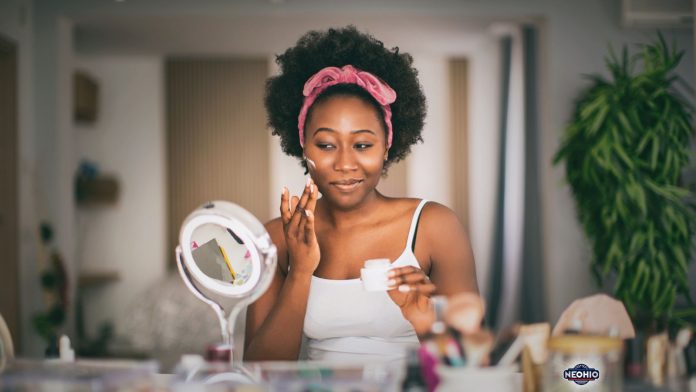The humble medicine cabinet, once a fixture in every American bathroom, is becoming an endangered species. As personal hygiene routines have exploded in complexity over the past decades, homeowners are increasingly choosing sleek mirrors over cramped storage compartments that can no longer accommodate today’s beauty arsenals.
The numbers tell the story of this transformation: the average American now uses 12 personal care products daily, with women using up to 16 skincare and cosmetic products in their routines. Men are also driving much of this growth, increasingly embracing comprehensive grooming routines that go far beyond traditional shaving needs. This represents a dramatic increase from decades past when a simple bar of soap, toothbrush, and razor comprised most bathroom essentials.
Men Leading the Grooming Revolution
The shift isn’t limited to women. Men’s skincare has emerged as one of the fastest-growing segments in personal care, with the global men’s skincare market projected to reach $23 billion by 2030. Men are increasingly adopting multi-step routines that include cleansers, moisturizers, serums, eye creams, and specialized treatments.
Modern male grooming extends far beyond basic shaving to include facial cleansers, hydrating moisturizers, anti-aging serums, eye creams, exfoliators, and even makeup for some men. Many are embracing personalized skincare regimens with products specifically formulated for men’s typically thicker skin and larger pores.
This evolution reflects changing attitudes about male self-care, with social media influencers and grooming experts encouraging men to invest in comprehensive skincare routines. The days of a simple splash of aftershave are long gone.
Expanded Routines Demand More Space
The shift reflects how dramatically personal care has evolved across all demographics. Women now spend an average of 22.4 minutes daily on skincare routines, with 74% using three or more products during their evening routine alone. A quarter of women use at least five skincare products during their nighttime regimen.
Traditional medicine cabinets, typically measuring just a few inches deep, simply cannot accommodate the bottles, tubes, and containers that comprise modern beauty routines. Interior designers note that medicine cabinets have become “catch-alls” where products pile up on narrow shelves, often falling into sinks when opened.
The most commonly used products today include moisturizers (93%), cleansers (85%), sunscreens (83%), and lip balms (80%), followed by eye creams (65%), serums (57%), exfoliators (55%), and toners (52%). These larger bottles and specialized containers dwarf the compact items that medicine cabinets were designed to hold.
Where Americans Store Their Beauty Products Now
Without medicine cabinets, homeowners have gotten creative with storage solutions. Popular alternatives include floating shelves, rolling utility carts, over-the-toilet storage units, magnetic racks, and vanity cabinets with extensive drawer space.
Many beauty experts now recommend storing skincare products outside the bathroom entirely, citing humidity and temperature fluctuations that can damage product effectiveness. Bedrooms, closets, and even dedicated skincare refrigerators have become preferred storage locations.
Professional organizers suggest separating daily routine products from occasional-use items, keeping frequently used products easily accessible while storing backup and specialty items elsewhere in the home.
The Mirror Revolution
Instead of medicine cabinets, homeowners are opting for large, statement mirrors that make small bathrooms appear larger. Designers note that beautiful mirrors serve as “artwork of the bathroom” and create more visual appeal than functional but often unsightly medicine cabinets.
While some medicine cabinets are making a comeback with sleek, recessed designs and smart features like LED lighting and defogging systems, many homeowners prefer the clean aesthetic of a simple mirror.
Market Adaptation
The medicine cabinet industry is responding with innovations including smart cabinets featuring sensors, digital displays, built-in lighting, and even Bluetooth speakers. The global medicine cabinet market is projected to grow from $9.4 billion in 2023 to $15.7 billion by 2034.
However, this growth appears driven more by commercial and healthcare applications than residential demand. Home design forums reveal mixed opinions among homeowners, with many still questioning whether medicine cabinets fit modern bathroom aesthetics.
The transformation of American bathrooms reflects broader changes in how we approach personal care. As routines become more elaborate and products more numerous, the infrastructure of our bathrooms continues to evolve, leaving the traditional medicine cabinet as a relic of simpler grooming times.
Discover more from Northeast Ohio News
Subscribe to get the latest posts sent to your email.











